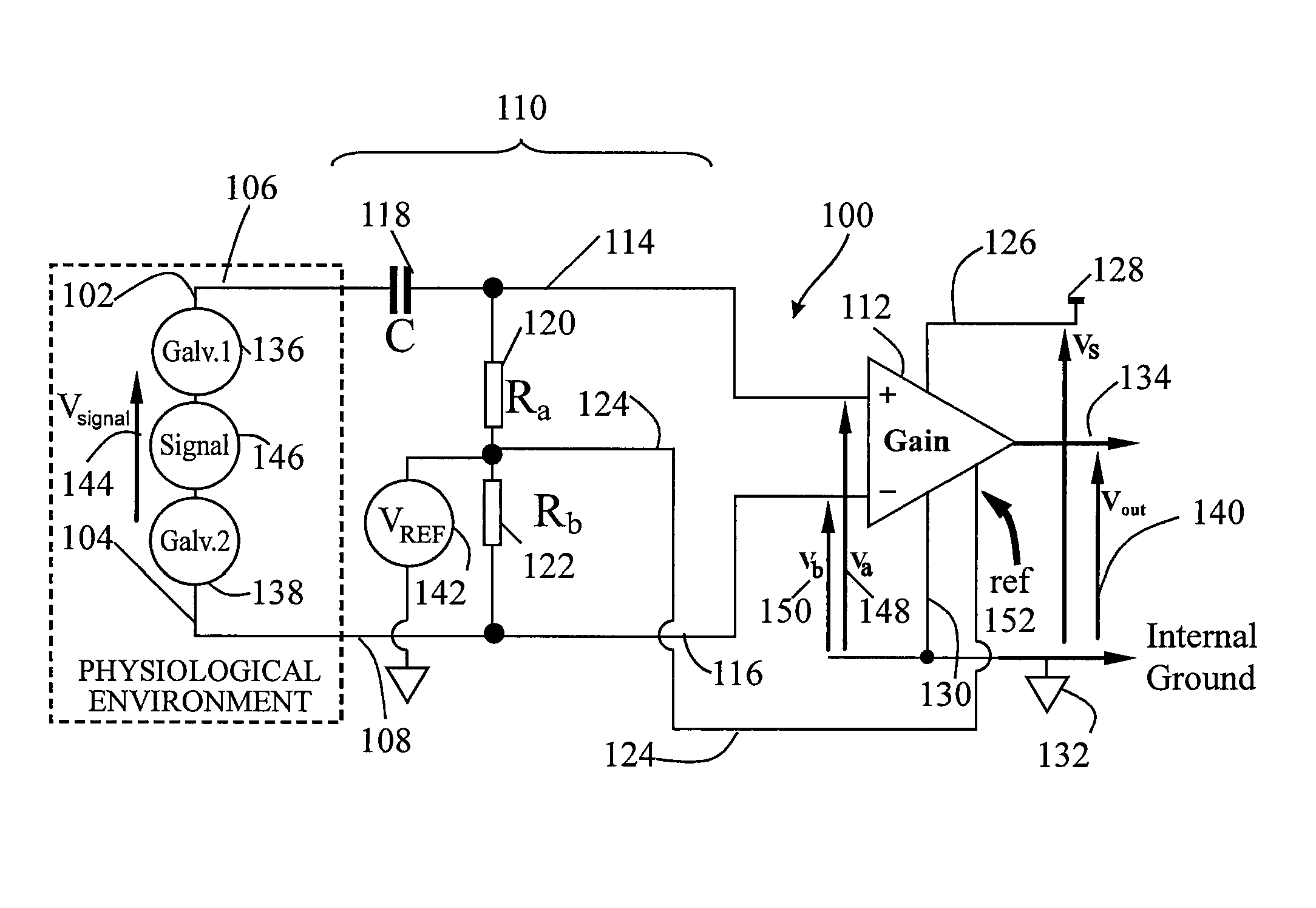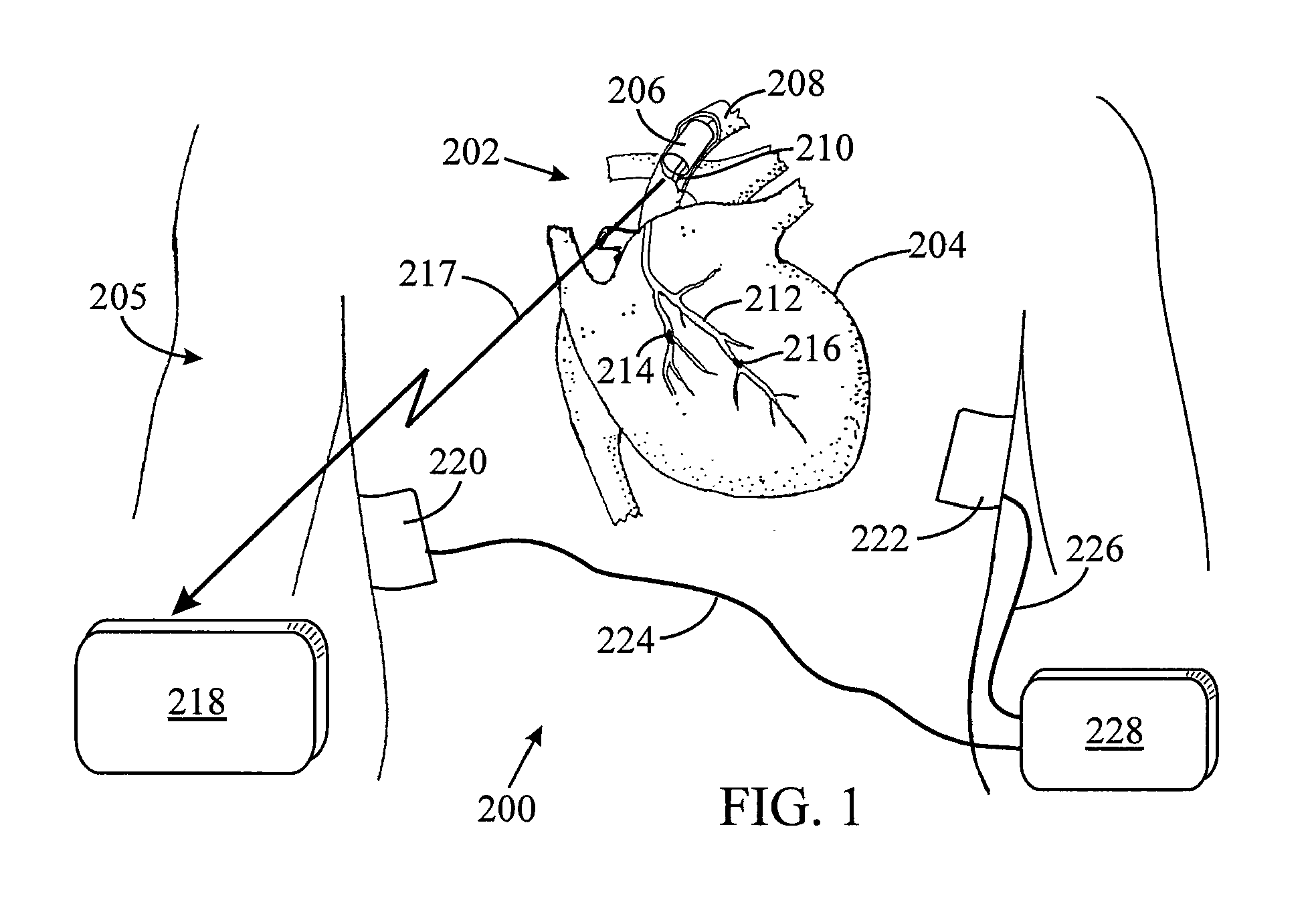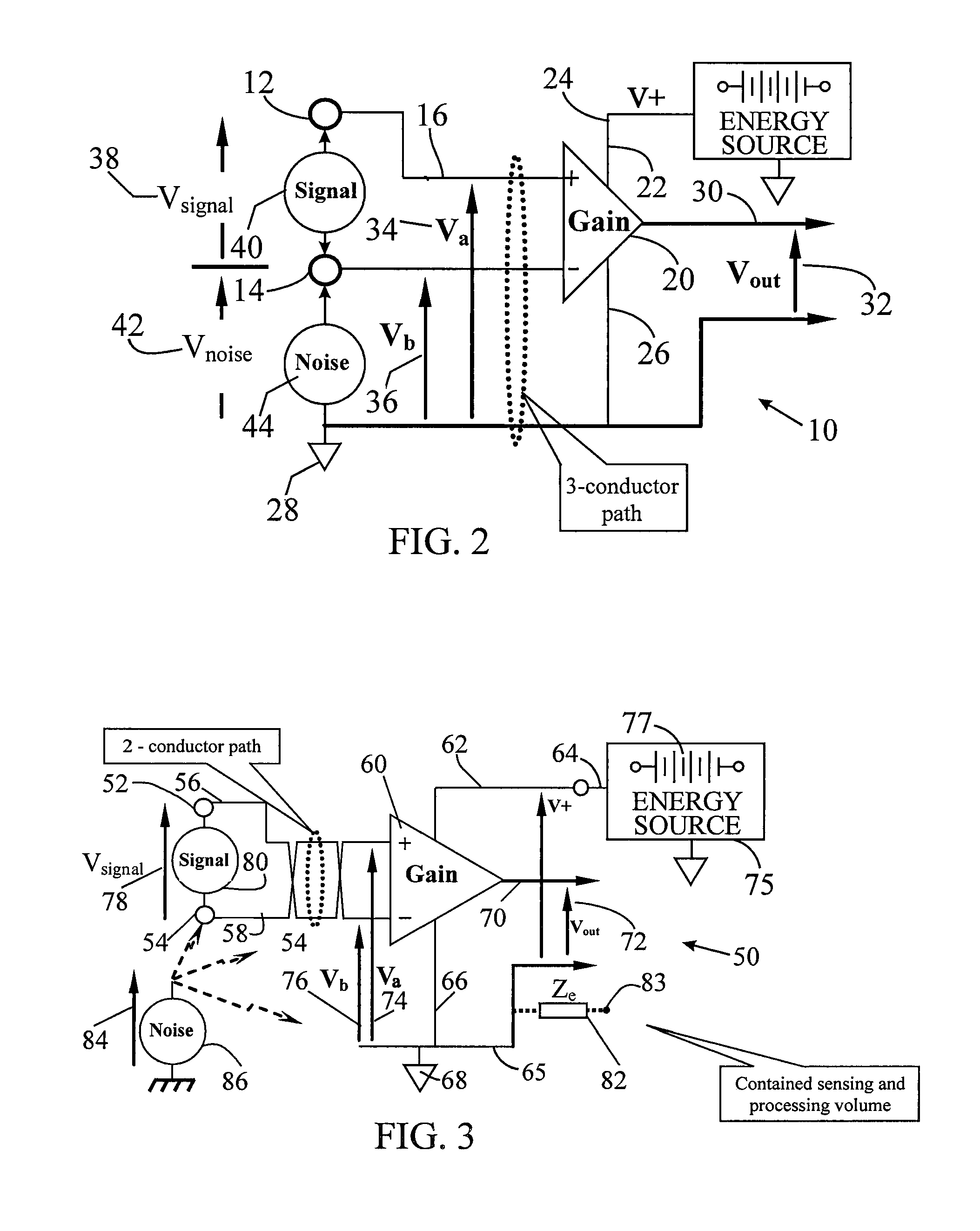Signal sensing in an implanted apparatus with an internal reference
a technology of signal sensing and implanted devices, which is applied in the field of medical devices, can solve the problems of deteriorating signal quality performance, affecting the operation of the implanted apparatus, and the inability to meet the needs of patients, etc., and achieves the elimination of ground and associated noise sources, avoiding emi noise, and eliminating dc and very low frequency noise.
- Summary
- Abstract
- Description
- Claims
- Application Information
AI Technical Summary
Benefits of technology
Problems solved by technology
Method used
Image
Examples
Embodiment Construction
[0036]The present invention is described in both the implanted and externally applied contexts. While the implanted context may be described as in a vein or artery of the heart for cardiac pacing, the present apparatus may also be employed to sense signals from muscles and / or nerves in other areas of the human body. In addition to cardiac applications, the sensing apparatus can provide brain signal sensing, for treatment of Parkinson's seizures. Similarly, while the external context is described in the cardiac and EEG arenas, the present apparatus may also be applicable to external sensing of other human body muscle and nerve signals.
[0037]An aspect of embodiments of the invention is the use of a plurality of electrode pairs disposed at a first set of location for the signal sensing. It should be understood that each electrode pair in close proximity or farther apart is included in the set. Further, if more electrode pairs are involved, the term set should encompass all such paired ...
PUM
 Login to View More
Login to View More Abstract
Description
Claims
Application Information
 Login to View More
Login to View More - R&D
- Intellectual Property
- Life Sciences
- Materials
- Tech Scout
- Unparalleled Data Quality
- Higher Quality Content
- 60% Fewer Hallucinations
Browse by: Latest US Patents, China's latest patents, Technical Efficacy Thesaurus, Application Domain, Technology Topic, Popular Technical Reports.
© 2025 PatSnap. All rights reserved.Legal|Privacy policy|Modern Slavery Act Transparency Statement|Sitemap|About US| Contact US: help@patsnap.com



